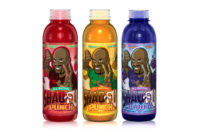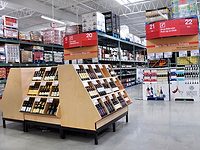High-income consumers have favorable view of warehouse/club stores
Energy drinks could parlay association to appeal to consumer group

Consumers are EQUIPPED with a number of tricks to help them save a few dollars when it comes to grocery shopping. Coupons, rewards cards, mail-in rebates and mobile apps are just a few ways to show off thrifty skills. But as much as these resources play a role in their saving habits, they also can limit where consumers shop and how much they buy. Enter the warehouse/club stores.
Because of the financial benefits that come with buying in bulk, club stores often have been associated with consumers on a tight budget. However, recent research from Chicago-based Mintel found that no matter what your socio-economic background is, consumers understand that a dollar saved is a dollar earned.
The study found that 38 percent of respondents reported that private-label brands at warehouse/club stores are comparable to name-brand products in terms of quality, but that number jumped up to 44 percent when surveying households earning $150,000 or more. This was the highest percentage across all income groups, with the next highest being the $100,000 to $149,999 income group at 41 percent. Consumers earning between $50,000 and $74,999 registered at 36 percent, while those earning less than $25,000 came in at 27 percent.
The $150,000 and up income group also outpaced the overall population of respondents when it came to determining whether warehouse/club stores carry quality products. Forty-six percent of these high-income shoppers said they believe warehouse/club stores carry high-quality products, versus 40 percent across all respondent groups.
“Shoppers in this group may be more likely to shop across a wider variety of retail stores and, therefore, [be] more aware of the price differential among retailers,” said Ali Lipson, category manager for retail, apparel, technology and automotive at Mintel, in a statement. “They are also more likely to be able to afford the shopping trip compared to those with lower incomes. Product messaging and signage that highlights the quality of warehouse/club products is sure to resonate with this demographic.”
This information could come in handy for energy drink manufacturers as well. In this month’s Category Focus (page 14), Jonas Feliciano, beverage analyst for Chicago-based Euromonitor International, notes that although the category just came off another year of growth, this growth represented a smaller margin than in years past. This could be a sign that the category has reached its maturation point, he notes, but he also thinks the category could benefit from a packaging expansion.
“Multi-packs are an area where energy drinks really want to start growing in, because that gets their foot in the door of larger-format retailers, [such as] supermarkets, hypermarkets and warehouses,” he says.
According to Alex Beckett, global food and drink analyst with Mintel, consumers with household incomes of $75,000 or more are less likely to be heavy energy drink consumers than those with incomes of less than $25,000. But considering high-income consumers’ positive perceptions of the products sold in warehouse/club stores, this retail placement might help the category gain favor with those consumers.
Looking for a reprint of this article?
From high-res PDFs to custom plaques, order your copy today!









